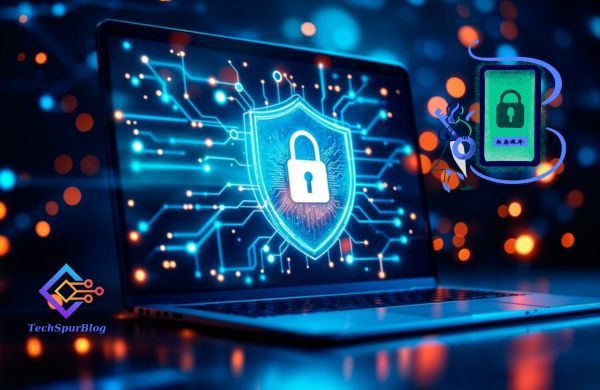
Introduction
Data Privacy and security are the major concern in today’s interconnected world. With personal and professional information increasingly being stored online, the safety of this data is crucial. Vulnerabilities in this information can be exploited by cyber criminals, hackers, or businesses themselves; identity theft, financial loss, and violation of privacy will follow suit then.
This article takes a closer look at just how important it is to safeguard one’s personal space from Internet predators as well avoiding potential scams and touches on some sound practices users of these systems should follow as well.
Data Privacy Understanding
What is Data Privacy
Data privacy protection of individual or collective privacy data. People and organizations have the right to control their personal information on how it is gathered, used shared. This means that no one but the authorized person may be allowed near sensitive data at all times: like financial records medical records telephone directories ISBNs.
What is Data Security
Data security is aimed at preventing the unauthorized access to or destruction of digital data. It also encompasses technologies, policies, and practices that protect information from harm by cyber threats as well-cyber threats ranging from computer viruses to worm driven spam attacks.
Also Read: AI Tools for Cybersecurity: Enhancing Data Protection in the Digital Age
The Importance of Data Privacy and Security
- Protection Against Identity Theft – Cybercriminals can use personal information such as your Social Security number and credit card details for fraud.
- Safeguarding Financial Transactions – Secure financial transactions protect banking and payment details from getting stolen.
- Compliance with Regulations – Some laws, including the European Union General Data Protection Regulation (GDPR) and the California Consumer Privacy Act (CCPA, insist that any information has to be tightly protected.
- Maintaining Trust and Reputation – Companies that put data security first can build trust with their clients and customers.
- Preventing Corporate Espionage – Businesses have to protect sensitive information from competitors and cybercriminals who want to gain an unfair advantage.
Common Threats to Data Privacy and Security
Phishing Attacks
Phishing is the scam of deceiving people into providing personal information by sending false emails or messages. The idea is that phishers often represent themselves as legitimate places, such as banks and government departments.
Malware and Ransomware
Malware refers to any software that is designed to damage computers when a program or file is transferred to said computers from elsewhere. One example is ransomware, a type of malware that encrypts one’s data and then demands payment for its release.
Data Breaches
Data breaches occur when a hacker gains unauthorized access to sensitive information stored in databases. Companies such as Facebook, Yahoo, Equifax, and many others have all been hit by huge breaches affecting millions of people.
Man-in-the-Middle Attacks
A man-in-the-middle attack is carried out on an unsecured Wi-Fi network by cybercriminals who intercept communications between two parties to steal data.
Insider Threats
Employees or contractors with access to sensitive data may leak information intentionally or inadvertently, which in turn poses security risks.
Also Read: Cybersecurity in Finance: Best Practices for Data Protection
How to Keep Your Data Safe
Create strong passwords or use multi-factor authentication (MFA)
- Initiatives to guard against unauthorized access.
- Use a combination of letters, numbers, and symbols when creating a password.
Always keep systems and programs updated.
- Regularly evaluate security policies as well as antivirus programs, and applications running under ISO or smartphone manufacturers ‘ current operating system protocols.
- Automatically update at the end of service when possible.
Be careful with emails and links that are not automatically recognized.
- Never click on unknown links or download attachments from sources.
- Check the email address of the sender and see if it is a scam message(pattern).
Encrypt sensitive data
- Use encryption tools to protect data stored on devices and transmitted over networks.
- Secure data storage in the cloud with end-to-end encryption.
Use a secure network
- Avoid using public Wi-Fi for financial transactions or sending sensitive information.
- Use a Virtual Private Network (VPN) to encrypt internet traffic.
Keep track of financial transactions and credit reports
- Go through your bank statement and credit report regularly.
- Set up alerting precautions with banks and credit bureaus.
Social networking should not result in unauthorized information transfer
- Do not release unnecessary personal details, such as addresses, birthdays, or travel schedules.
- Alter privacy options in social network accounts to curb release to others.
Back up your data regularly
- Keep a backup on a separate hard drive++ or in the cloud.
- Make sure the backup data is encrypted and securely kept.
Install a firewall and virus software
- Set up firewalls to block unauthorized access to networks.
- A trustworthy anti-virus product should be installed to detect and remove viruses.
Keep yourself and others well-educated
- You should stay aware of the newest threats to cybersecurity.
- Familiarize oneself and family members with safety awareness procedures.
Also Read: Protecting Your Data: Essential Tips for Cybersecurity
Roles of the Government and Organizations in Data Protection
Regulatory Frameworks
To protect data privacy, governments around the world have introduced legislation. Legislation has evolved around the world and some keys include:
- GDPR (General Data Protection Regulation) — An EU law that imposes strict requirements on data protection.
- CCPA ( California Consumer Privacy Act) — Provides Californians with more control over how their personal information is used.
- HIPAA ( Health Insurance Portability and Accountability Act) — Protects the privacy of medical information in the United States.
Corporate Responsibility
Organizations must enforce strict security policies, keep current on auditing requirements, and introduce military-grade cyber security technology. Companies such as Apple, Google, and Microsoft continually update their protection settings to provide you with an even more secure…
Emerging technologies in data security
Artificial Intelligence (AI) and Machine Learning
Using AI and machine learning, cybersecurity tools can detect and stop threats in real-time, analyzing patterns while also finding anomalies.
Blockchain Technology
Blockchain technology significantly improves security through its provision of a decentralized and tamper-proof ledger for transaction records as well as data storage purposes.
Zero Trust Security Model
The model takes it as a given that threats are just as likely to come from inside the network when they might from without and so requires constant user authentication and regular checks on any device in suspense.
Also Read: How EMR Software Enhances Data Security in Healthcare
Conclusion
When cyber threats are constantly changing, data privacy and security must be respected. With the right confidence and information to keep you on track doing what’s expected of a responsible fiduciary, people can and should secure sensitive data from cybercriminals- organizations as well as individuals.
Technology continues to advance, yet continual improvement in cyber security work will also guarantee a better world for all those who inhabit this realm of bits and bytes.

Leave a Reply